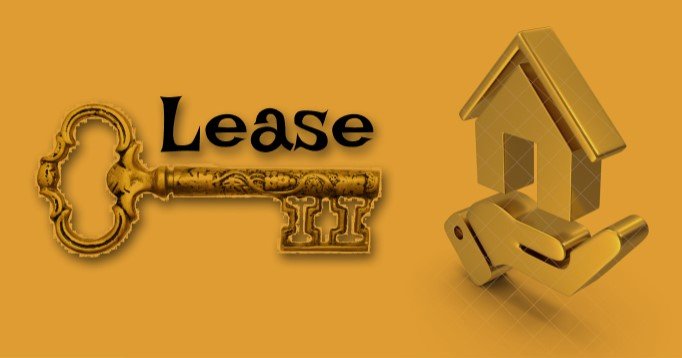Lease liabilities interest refers to the cost incurred by a lessee for the use of an asset leased over a specified period. This concept is crucial in financial accounting and reporting, particularly under new lease accounting standards like IFRS 16 and ASC 842. The interest component represents the finance cost associated with the lease liability, reflecting the time value of money.
Key Concepts
- Lease Liability: The obligation to make lease payments as per the lease agreement.
- Interest Rate: The rate at which interest is charged on the lease liability, often referred to as the incremental borrowing rate.
How to Calculate Lease Liabilities Interest
Calculating lease liabilities interest involves determining the present value of future lease payments, discounted at the lessee’s incremental borrowing rate. Here’s a step-by-step guide:
- Identify Lease Payments: List all payments required under the lease terms, including fixed and variable payments.
- Determine the Discount Rate: Use the lessee’s incremental borrowing rate if the interest rate implicit in the lease is not readily determinable.
- Present Value Calculation: Discount the future lease payments to their present value using the identified discount rate.
Example Calculation
Suppose a company leases an asset with annual payments of $10,000 for five years, and the incremental borrowing rate is 5%. The present value of lease payments can be calculated using the formula for the present value of an annuity.
Lease Liabilities Interest Rate
The lease liabilities interest rate is a crucial factor in calculating the interest expense on a lease. This rate can be either the rate implicit in the lease or the lessee’s incremental borrowing rate.
Determining the Rate
- Rate Implicit in the Lease: The interest rate that causes the present value of the lease payments and unguaranteed residual value to equal the fair value of the underlying asset plus any initial direct costs of the lessor.
- Incremental Borrowing Rate: The rate the lessee would have to pay to borrow over a similar term, with similar security, the funds necessary to obtain an asset of a similar value in a similar economic environment.
Lease Liabilities Interest Bearing
Lease liabilities are considered interest-bearing as they include an interest component that accrues over the lease term. This interest-bearing nature affects how lease liabilities are recorded and reported in financial statements.
Financial Reporting
- Balance Sheet: Lease liabilities are reported as interest-bearing debt, reflecting the obligation to make future payments.
- Income Statement: Interest expense on lease liabilities is recognized over the lease term.
Lease Liabilities Interest Expense
Lease liabilities interest expense is the cost recognized in the income statement for the period relating to the interest component of lease liabilities. This expense is calculated based on the effective interest method.
Calculation
- Effective Interest Method: This method allocates interest expense over the lease term, reflecting a constant periodic rate of interest on the remaining balance of the lease liability.
- Example: If the opening balance of the lease liability is $50,000 and the interest rate is 5%, the interest expense for the first year would be $2,500.
Lease Liabilities Interest Bearing Debt
Lease liabilities are a form of interest-bearing debt, representing a significant component of a company’s total liabilities. This classification has implications for financial ratios and metrics used by analysts and investors.
Implications for Financial Analysis
- Debt-to-Equity Ratio: Including lease liabilities increases the debt component, potentially affecting the company’s leverage ratio.
- Interest Coverage Ratio: Higher interest expense on lease liabilities can impact the company’s ability to cover interest payments from its operating income.
Conclusion
Understanding lease liabilities interest is essential for lessees and financial analysts as it significantly impacts financial reporting and various financial metrics. By comprehending how lease liabilities interest is calculated, the factors affecting interest rates, and its implications for financial statements, businesses can make informed leasing decisions and accurately manage their financial obligations. This knowledge is crucial with the adoption of standards like IFRS 16 and ASC 842, which demand greater transparency in financial reporting. Ultimately, a solid grasp of lease liabilities interest enables companies to present a precise financial position and aids stakeholders in making better financial evaluations.
FAQ’s
Do lease liabilities have interest?
Yes, lease liabilities do include interest. When a company enters into a lease agreement, it agrees to make future payments not just for the principal amount but also with an interest component, similar to a loan. This interest represents the finance cost associated with the time value of money over the lease term and is calculated using the discount rate, which can be the rate implicit in the lease or the lessee’s incremental borrowing rate. The interest on lease liabilities impacts financial statements significantly, as it is recognized as an interest expense in the income statement, affecting overall profitability. On the balance sheet, lease liabilities are recorded as interest-bearing debt, which influences key financial ratios like the debt-to-equity ratio and interest coverage ratio. Understanding the interest component of lease liabilities is essential for accurate financial reporting and analysis, especially under standards like IFRS 16 and ASC 842, which emphasize transparency and reliability in financial disclosures.
What is interest on a lease?
Interest on a lease is the finance cost associated with the future lease payments over the lease term. It reflects the cost of borrowing to finance the use of an asset and is a key component of lease liabilities. When a company enters into a lease agreement, it commits to payments that typically include both the principal repayment and an interest component. This interest rate can be either the rate implicit in the lease or the lessee’s incremental borrowing rate. The interest is calculated using the effective interest method, which distributes the interest expense over the lease term, maintaining a constant periodic rate of interest on the remaining lease liability balance. This interest impacts financial statements by increasing the interest expense on the income statement, thereby affecting net income. On the balance sheet, lease liabilities are recorded as interest-bearing debt, influencing financial ratios like the debt-to-equity ratio and interest coverage ratio. Understanding interest on a lease is crucial for accurate financial reporting and adherence to accounting standards like IFRS 16 and ASC 842, which require transparency and precise calculation of lease-related expenses.
What is the effective interest method of lease liability?
The effective interest method of lease liability is a technique used to calculate and allocate interest expense over the lease term, ensuring a constant periodic rate of interest on the remaining balance of the lease liability. This method ensures that the interest expense recognized each period is proportional to the carrying amount of the lease liability. Using the effective interest method, the interest expense for each period is determined by multiplying the opening balance of the lease liability by the interest rate specified in the lease. This interest expense is then added to the lease liability, while the actual lease payments made reduce the lease liability. The remaining balance is carried forward to the next period, and the calculation is repeated. This method provides a systematic and rational way to allocate interest expense, ensuring that financial statements accurately reflect the cost of leasing over time. The effective interest method of lease liability is crucial for compliance with accounting standards like IFRS 16 and ASC 842, which require precise and transparent reporting of lease expenses to give stakeholders a clear view of a company’s financial obligations.
What are lease liabilities examples?
Lease liabilities examples encompass a range of obligations arising from lease agreements, where lessees commit to future payments for the use of assets. These include leases for equipment, real estate, and vehicles. For instance, equipment leases involve leasing machinery or technology essential for business operations, with lease payments constituting the liability. Real estate leases cover agreements for office spaces, retail outlets, or warehouses, where periodic payments reflect the lease liability over the lease term. Vehicle leases, such as leasing cars or trucks, also create lease liabilities, with payments structured to cover the vehicle’s use throughout the lease period. These examples highlight the importance of accurately recording lease obligations on the balance sheet, aligning with accounting standards like IFRS 16 and ASC 842, which mandate transparent reporting of lease commitments and their financial impact.

